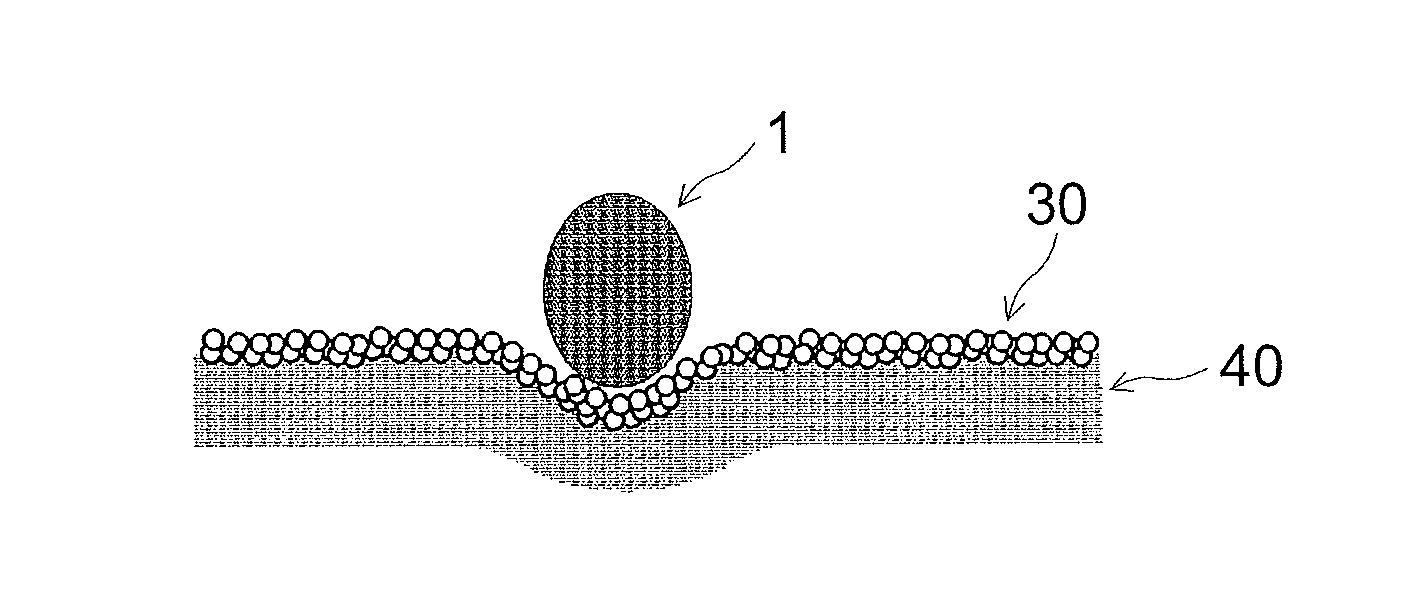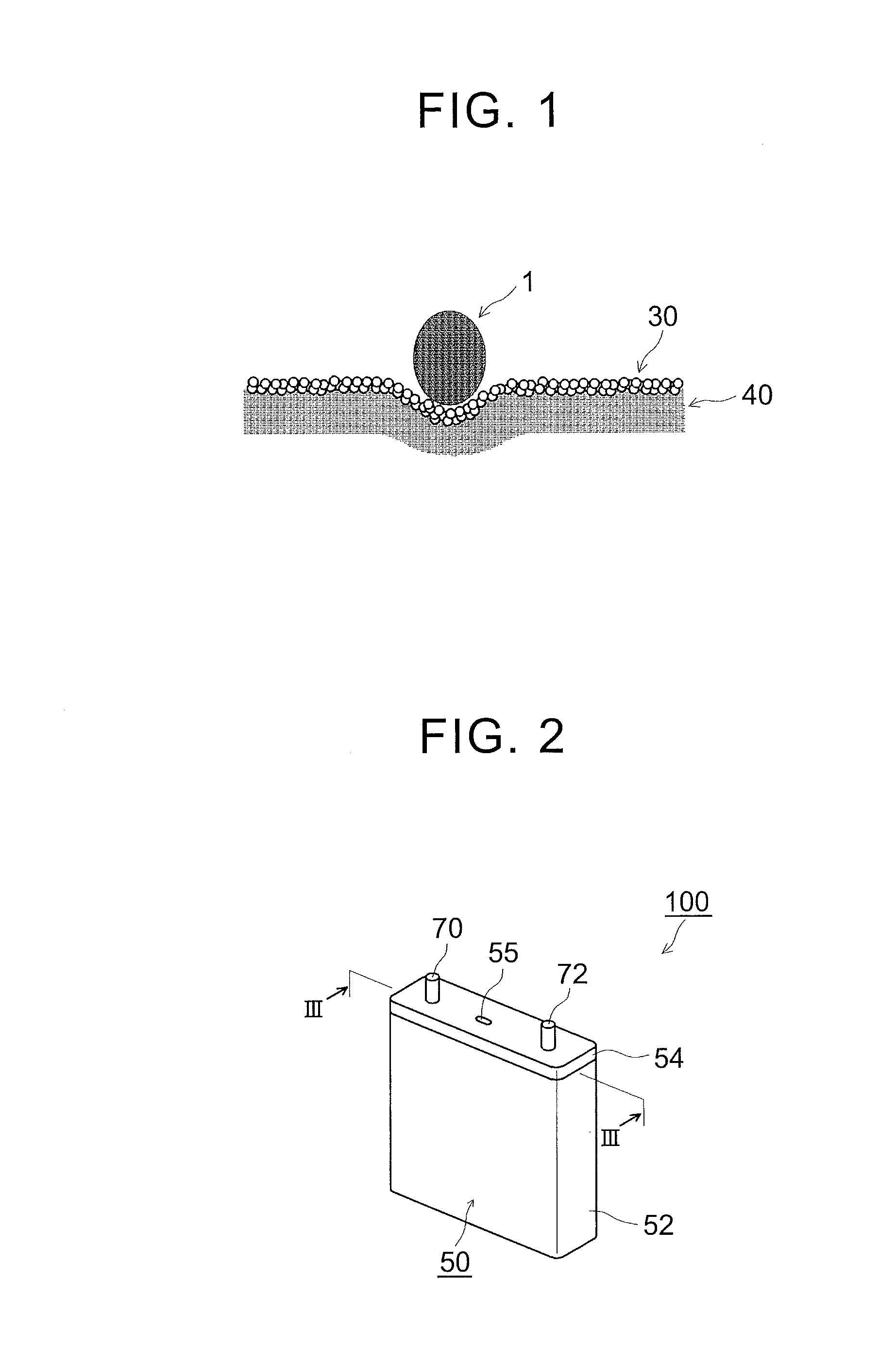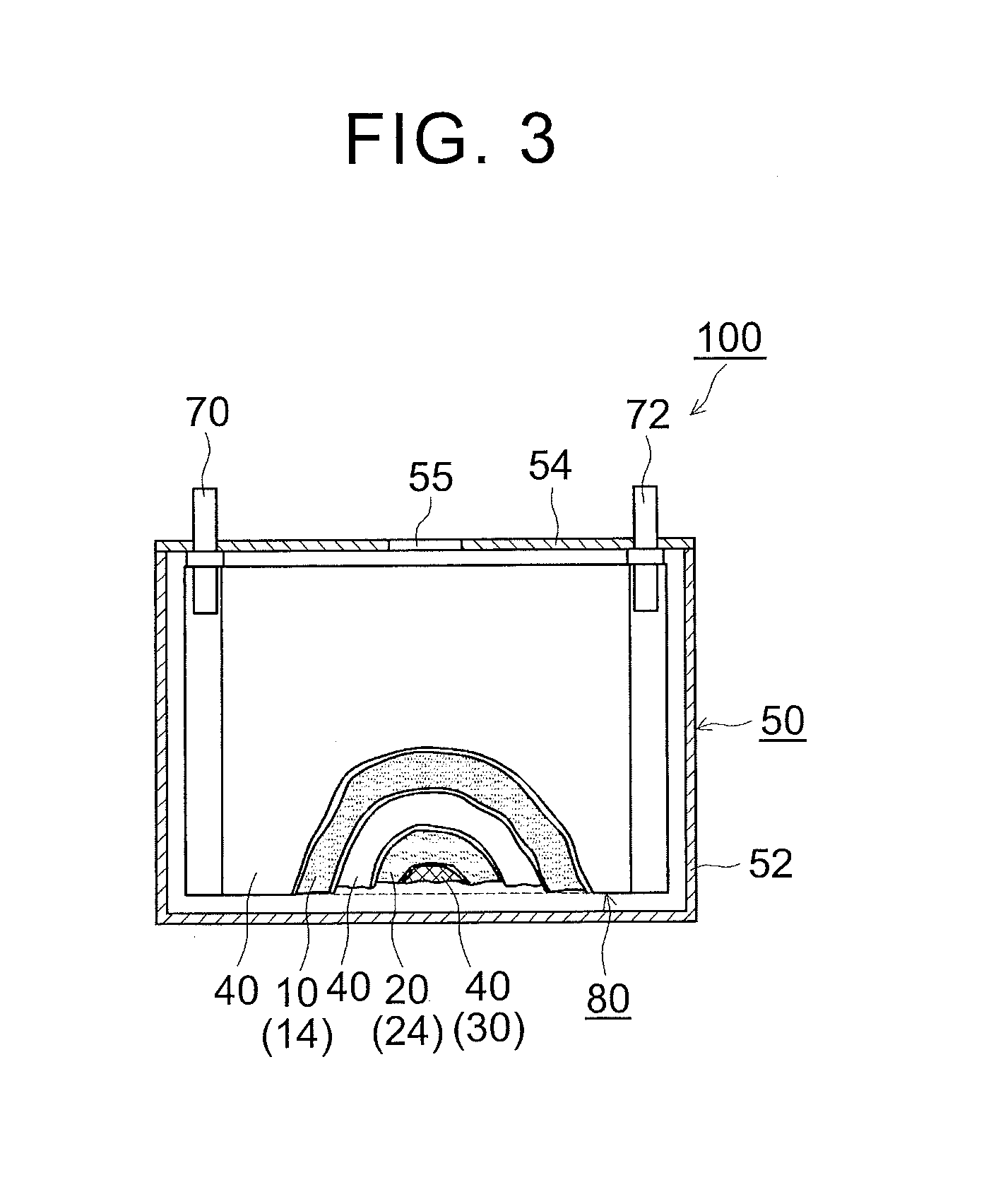Nonaqueous electrolyte secondary battery
a secondary battery and electrolyte technology, applied in the manufacture of final products, cell components, cell component details, etc., can solve the problems of difficult to handle internal short circuits, decrease in battery voltage, and degraded battery performance, so as to achieve excellent ion permeability and reduce electric resistance. , the effect of high reliability
- Summary
- Abstract
- Description
- Claims
- Application Information
AI Technical Summary
Benefits of technology
Problems solved by technology
Method used
Image
Examples
Embodiment Construction
[0025]Hereinafter, with reference to drawings, preferable embodiments of the present invention will be described. In the attached drawings, the like members and regions that provide the same actions are denoted with like numerals. Further, a dimensional relationship (length, width, and thickness) in each of drawings does not reflect an actual dimensional relationship. Items that are necessary for carrying out the embodiment of the present invention other than items particularly referred to in the specification may be grasped as design matters of a person skilled in the art based on the related technology in the concerned field. The embodiment of the present invention may be carried out based on contents disclosed in the specification and common technical knowledge in the concerned field.
[0026]Although not particularly intended to limit, hereinafter, as a schematic structure of a nonaqueous electrolyte secondary battery according to one embodiment of the present invention, a nonaqueo...
PUM
| Property | Measurement | Unit |
|---|---|---|
| particle size | aaaaa | aaaaa |
| particle size | aaaaa | aaaaa |
| particle size | aaaaa | aaaaa |
Abstract
Description
Claims
Application Information
 Login to View More
Login to View More - R&D
- Intellectual Property
- Life Sciences
- Materials
- Tech Scout
- Unparalleled Data Quality
- Higher Quality Content
- 60% Fewer Hallucinations
Browse by: Latest US Patents, China's latest patents, Technical Efficacy Thesaurus, Application Domain, Technology Topic, Popular Technical Reports.
© 2025 PatSnap. All rights reserved.Legal|Privacy policy|Modern Slavery Act Transparency Statement|Sitemap|About US| Contact US: help@patsnap.com



